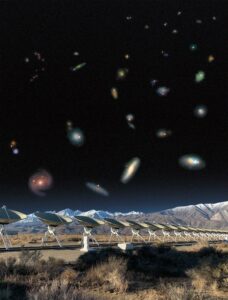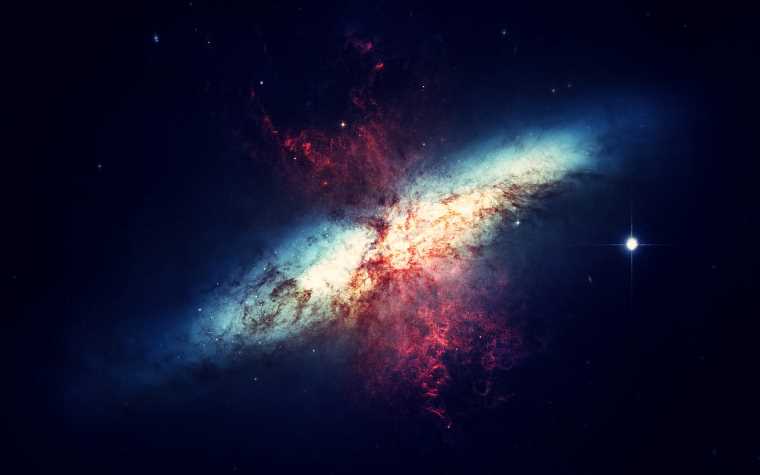Compelling new evidence suggests that unexplained radio signals from deep space, known as fast radio bursts (FRBs), come from massive star-forming galaxies rather than those with lower masses.
Astronomers from the California Institute of Technology (Cal Tech) say they now believe these FRBs originate from highly magnetized neutron stars called magnetars that form within massive, metal-rich galaxies when stars explode.
Previous research has tied the origins of FRBs to magnetars, although the team’s new effort is the first to identify massive metal-rich galaxies as the likeliest places magnetars will form, and also helps to explain the mechanisms behind their formation.
“Since FRBs are preferentially observed in massive and metal-rich star-forming galaxies, then magnetars (which are thought to trigger FRBs) are probably also forming in metal-rich environments conducive to the merging of two stars,” explains a press release announcing the study. “The results, therefore, hint that magnetars across the universe originate from the remnants of stellar mergers.”
Mystery of Fast Radio Bursts Tied to Origins of Magnetars
At the time of the study, just over 100 FRBs had been spotted by modern telescopes. One of those bursts was witnessed in 2020 when researchers captured an FRB in our Milky Way galaxy. Further analysis showed that that event was caused when two stars merged and then exploded in a supernova.
Before that event, astronomers weren’t sure how magnetars were created. Some models favored a single star going supernova, while other data supported the idea that magnetars form from the merger and subsequent explosion of binary star systems.
In their new research, the team’s latest study favors the second explanation, offering astronomers a clearer picture of what likely causes magnetars.


“The immense power output of magnetars makes them some of the most fascinating and extreme objects in the universe,” says Kritti Sharma, lead author of the new study and a graduate student working with Vikram Ravi, an assistant professor of astronomy at Caltech. “Very little is known about what causes the formation of magnetars upon the death of massive stars. Our work helps to answer this question.”
According to the study authors, massive galaxies contain more metal than lower-mass galaxies, which are primarily made up of gases like hydrogen and helium. When stars form in those massive galaxies, they create metals. In binary star systems, these metals can be pulled from one star to the other, resulting in their merger.
“Over time, as galaxies grow, successive generations of stars enrich galaxies with metals as they evolve and die,” Ravi explained.
Since 84% of known massive stars are binary systems, their mergers are not unexpected. This merger adds fuel to the star’s ultimate explosion, an event the researchers believe results in a Fast Radio Burst.
“A star with more metal content puffs up, drives mass transfer, culminating in a merger, thus forming an even more massive star with a total magnetic field greater than what the individual star would have had,” Sharma explains. Unlike main sequence stars like our Sun, magnetars are super dense neutron stars with 100 trillion times stronger magnetic fields than Earth’s.
Findings Highlight Capabilities of Sprawling Telescope Array
To make this determination, the Cal Tech team studied 30 of the 70 FRBs previously localized by the Deep Synoptic Array-110 (DSA-110). A vast, sprawling array of radio telescopes, the DSA-110 has successfully localized more FRBs than all other instruments combined, which have localized the origin of 23 collectively.
“DSA-110 has more than doubled the number of FRBs with known host galaxies,” says Ravi. “This is what we built the array to do.”
That analysis revealed that nearly all studied FRBs came from massive star-forming galaxies rather than low-mass galaxies. According to the study authors, this finding alone was significant since astronomers previously believed that FRBs came from all types of galaxies where magnetars formed.
The team hopes to gather more information on FRBs from the DSA-110 array in the future. They also note that a future array called DSA-2000, which is on track to be built in the Nevada desert by 2028, will significantly expand their efforts by increasing their FRB detecting abilities.
“This result is a milestone for the whole DSA team. A lot of the authors on this paper helped build the DSA-110,” Ravi says. “And the fact that the DSA-110 is so good at localizing FRBs bodes well for the success of DSA-2000.”
The study “Preferential Occurrence of Fast Radio Bursts in Massive Star-Forming Galaxies” was published in Nature.
Christopher Plain is a Science Fiction and Fantasy novelist and Head Science Writer at The Debrief. Follow and connect with him on X, learn about his books at plainfiction.com, or email him directly at christopher@thedebrief.org.

